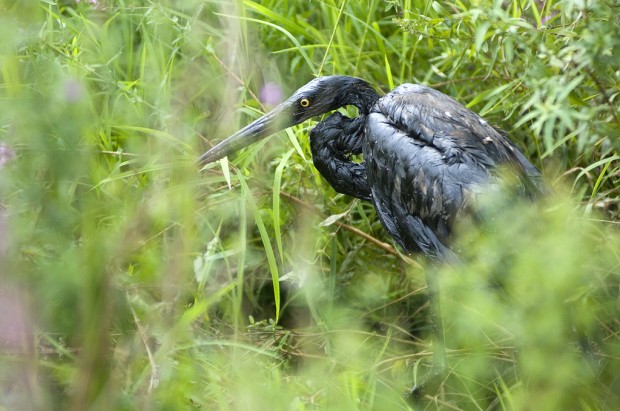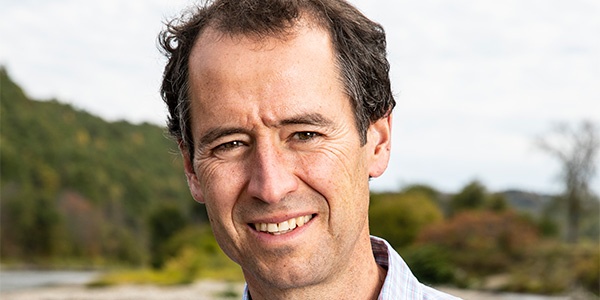We have much more to do and your continued support is needed now more than ever.
State Department Approves Illegal Scheme for Doubling Tar Sands Flowing through the Great Lakes
Updated: Take action below to tell the State Department not to allow expansion of the Alberta Clipper tar sands pipeline.
On August 18, 2014, the State Department posted documents that show Enbridge has hatched a scheme to almost double the flow of tar sands into the Great Lakes region along its Alberta Clipper pipeline ( also known as Line 67), in contradiction to its existing permit. In a privately sent letter from a mid-level State Department official, the State Department acquiesced to Enbridge’s new plan. This letter has yet to be made public by the State Department.
This is a substantial change in how tar sands enters the United States. Federal law requires the State Department to approve any such change only if the following requirements have been met: (1) public notice and involvement, (2) a detailed environmental review, and (3) a national interest determination. This is the process governing review of the Keystone XL pipeline. But here, none of these requirements have been followed.
Increased tar sands in the Great Lakes would present spill risks to the wildlife and people that depend on these treasures, as well as spurring carbon pollution and climate change.
The State Department must immediately correct this illegal mistake and stop Enbridge from any tar sands expansion along the Alberta Clipper line until the law has been followed. A failure to do so violates both the law and President Obama’s commitment to ensure that tar sands pipeline projects not exacerbate the problem of climate change.

Enbridge’s Plans to Move Tar Sands through the Great Lakes
Enbridge, a giant Canadian oil pipeline company, operates a vast array of pipelines through the Great Lakes region that carry climate-disrupting, toxic tar sands from Northern Alberta to refineries in the region and beyond. The main artery for this system is Alberta Clipper, a 1,000 mile line that transports tar sands to terminus in Superior, Wisconsin, where the tar sands is either refined or loaded onto other pipes for refinery or possible export.
Alberta Clipper currently has a Presidential Permit allowing it to ship up to 450,000 barrels per day (bpd) on the that line. To fulfill the industry’s desire to increase carbon intensive tar sands extraction, Enbridge submitted an Application to the State Department in November of 2012 to ultimately approximately double the amount of tar sands flowing through Alberta Clipper to 880,000 bpd. This would make it larger than the controversial Keystone XL pipeline.
The State Department made clear that it would require a new amended permit before this expansion could take place and that it would prepare, prior to approval of any expansion, a comprehensive Supplemental Environmental Impact Statement, or environmental review, that will include “information and analysis about potential impacts associated with the proposed increased volume of crude oil, as well as any other subjects that may need to be updated because there exist significant new circumstances or information relevant to environmental concerns bearing on the proposed action or its impacts.”
This review process has been underway, with the State Department accepting scoping comments on the review process in May of 2013. Applicable law requires that the State Department issue a draft review, take and consider public comments on that review, and then make a reasoned determination as to whether Enbridge’s expansion proposal is in the national interest.
While there is not a specific test for the national interest, in a June 25, 2013 speech, President Obama stated that tar sands pipelines projects are not in the national interest if they “exacerbate the problem of carbon pollution.” After a previous consultant withdrew for unknown reasons, the State Department contracted with another outside consultant in or about March of 2014 to resume the environmental review process.
Scheming to Avoid Review
In a June 16, 2014 letter made public by the State Department on August 20, 2014, Enbridge attorneys provided details of a plan first laid out in a referenced meeting between Enbridge and State Department officials on June 3, 2014 to approximately double the capacity of Alberta Clipper without going through the required review process.
Enbridge’s plan is to increase the volume of the flow of tar sands on Alberta Clipper by pumping tar sands to a neighboring pipeline (Line 3) north of the US/Canada border and then pumping it back to Alberta Clipper just south of the border. Line 3 has a Presidential Permit, but unlike Alberta Clipper’s permit it does not appear to expressly limit the capacity of that line. However, Line 3 is not a tar sands pipeline and was not approved as such.
This switch would currently allow an increase of volume of tar sands on the Alberta Clipper line of up to 800,000 bpd. This would effectively double the flow of carbon intensive tar sands on the line – the very thing Enbridge is seeking in its permit application and State Department is supposedly reviewing.

State Department’s Illegal Approval of this Scheme
On July 24, 2014, Patrick Dunn, a mid-level State Department official, wrote a letter to Enbridge’s attorneys stating that Enbridge’s plan to move up to 800,000 bpd on Alberta Clipper by switching lines with Line 3 at the border does “not require authorization.” This is like interpreting a speed limit as only applying to the road, but not the road’s shoulder.
To make matters worse, this letter was never made public or subjected to public review. The Keystone XL pipeline – which is indefinitely delayed – has already received millions of public comments expressing concern over the impacts of tar sands.
Enbridge’s proposal violates its permit which does not allow it ship more tar sands and also appears to violate Line 3’s permit, which does not contemplate moving such a high volume of tar sands. State Department must follow the law before approving the proposed change. Enbridge’s permit limits the flow on Alberta Clipper to 450,000 and State Department has already made clear any increase requires an amended permit and comprehensive environmental review.
The State Department must reverse this decision, prohibit Enbridge from moving forward with any capacity increase until the current review, and ensure the President’s climate test is applied to this effort double the amount of toxic tar sands snaking through the Great Lakes.
![]() Tell the State Department: Do not allow expansion of the Alberta Clipper tar sands pipeline!
Tell the State Department: Do not allow expansion of the Alberta Clipper tar sands pipeline!






















